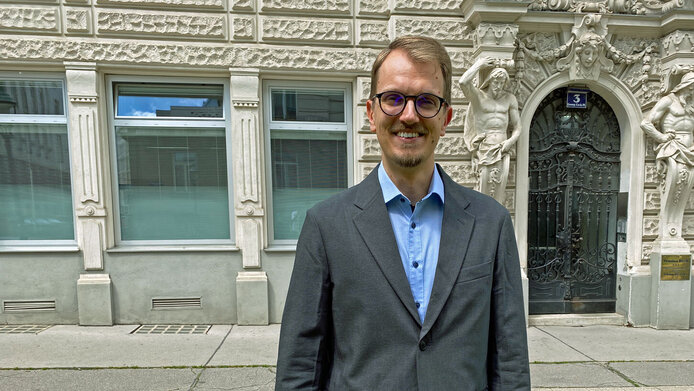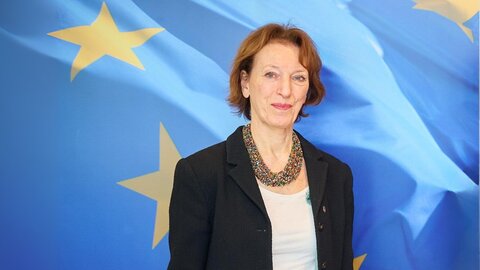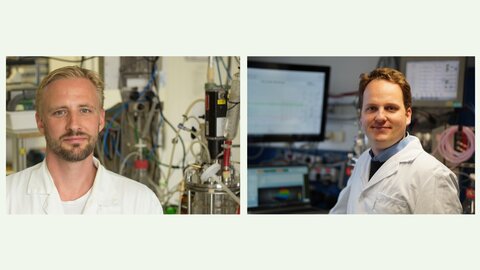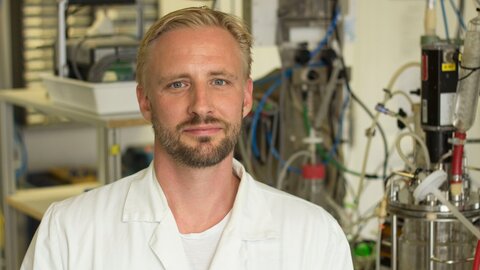Cross-dimensional quantum theories

What knowledge gaps does your project aim to fill?
Marcus Sperling: We work with a physical theory called quantum field theory, usually abbreviated as “QFT”. It describes physical phenomena ranging from the very small in the subatomic realm to some aspects that pertain to the entire universe. Many of QFT’s predictions have been accurately confirmed in experiments such as those carried out at the Large Hadron Collider at CERN.
However, many of the calculations arising from QFT are so complicated that they simply cannot yet be done, because some of the theory’s mathematical foundations are not even fully understood. This is especially problematic when we try to apply QFT to complex and more realistic systems with a larger number of particles.
In physics, you often study simple special cases first, and then gradually build a general theory on that basis. That is why my research looks at a special kind of quantum field theories, supersymmetric QFTs, which have certain mathematical properties that make it easier for us to perform exact calculations. We use these “simplified” QFTs as a kind of laboratory environment that enables us to better understand the whole theory.
What are your first steps in your project?
Sperling: The idea is to use supersymmetric quantum field theories, which are similar to actual physical systems of subatomic particles. Since these are only thought constructs for the time being, we can even study theories in more dimensions than just the three spatial dimensions and one time dimension we live in.
Marcus Sperling is currently conducting research on supersymmetric quantum field theories at the interface of physics and mathematics at the Shing-Tung Yau Center at Southeast University in Nanjing, China. After completing his PhD at the Gottfried Wilhelm Leibniz University in Hannover, he worked at the University of Vienna as a postdoc and then at the Yau Mathematical Sciences Center at Tsinghua University in Beijing, China.
Mathematics gives us a list of supersymmetric QFTs in different dimensions, which we will look at first one by one. Then, we begin with the theory in six dimensions. This sounds very abstract, but we can do this mathematically and then progress to QFTs in fewer dimensions on our list. Just as a biologist discovers new species, our goal is to describe all the species of these particular QFTs.
Where can your research be applied?
Sperling: Our research deals with the fundamentals of how we understand physics. Once we have grasped quantum field theories in our laboratory setting, we can apply these insights to more realistic QFT models. In addition, physics can also provide new ideas and intuition for mathematical constructs, which are in turn often of interest to mathematicians. Physics and mathematics are always cross-pollinating each other with ideas.
What does the START award mean for your research activities?
Sperling: The START award is a quality seal for research projects. Being selected as a recipient is something special, and now I will be able to dedicate myself to a research topic for several years. What is new is that I will now be building my own team. I am also happy to be working at the University of Vienna and at the Erwin Schrödinger Institute for Mathematical Physics, where I can enjoy a creative and well-connected research environment.
What motivates you in your day-to-day research?
Sperling: I find the interplay between physics and mathematics very appealing. You can use abstract mathematics to describe real physical systems. It is also always a pleasure to work with my very talented colleagues. Thanks to this new project, I can now support and guide young scientists in their work and careers. That is a wonderful challenge.
Do you have role models in your research?
Sperling: There are many researchers who have shaped me, such as my diploma supervisor Dominik Stöckinger at the Dresden Technical Universtiy, who introduced me to research, and my PhD supervisors Olaf Lechtenfeld and Alexander Popov, who guided me toward conducting independent research. There is also Amihay Hanany from Imperial College London, who I know from our work together during my PhD, whose great commitment and passion for research has greatly influenced me, coupled with his immense knowledge and intuition.
About the project
The project “Phases of Quantum Field Theories: Symmetries and Vacua” studies a large, representative subclass of supersymmetric quantum field theories and uses them as a laboratory to lay the foundations for a more general quantum field theory. In so doing, the researchers will use novel mathematical methods to systematically describe the ground states and symmetries in supersymmetric quantum field theories in various dimensions.
The FWF START Award
The START program of the Austrian Science Fund (FWF) is aimed at outstanding young researchers, giving them the opportunity to plan their research in the long term and with a high degree of financial securityIt is endowed with up to €1.2 million and is one of Austria’s most prestigious and most highly endowed awards alongside the FWF Wittgenstein Award.





